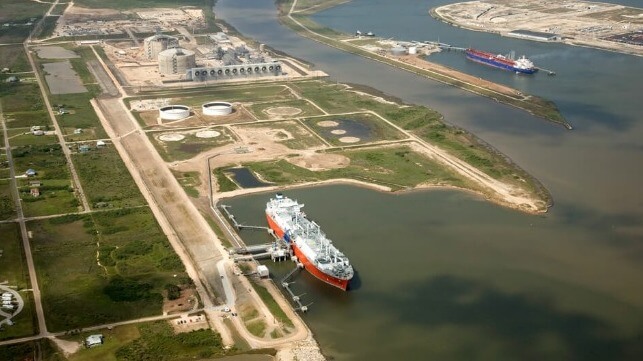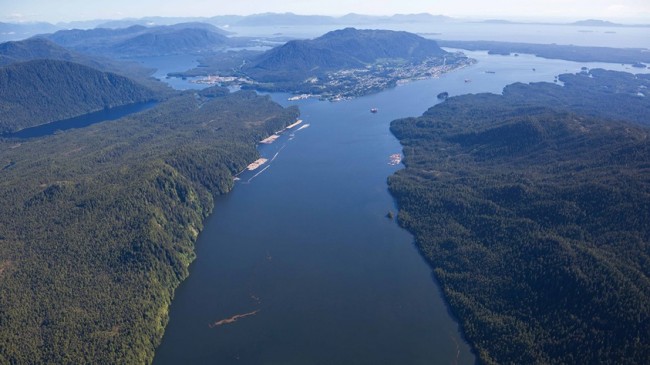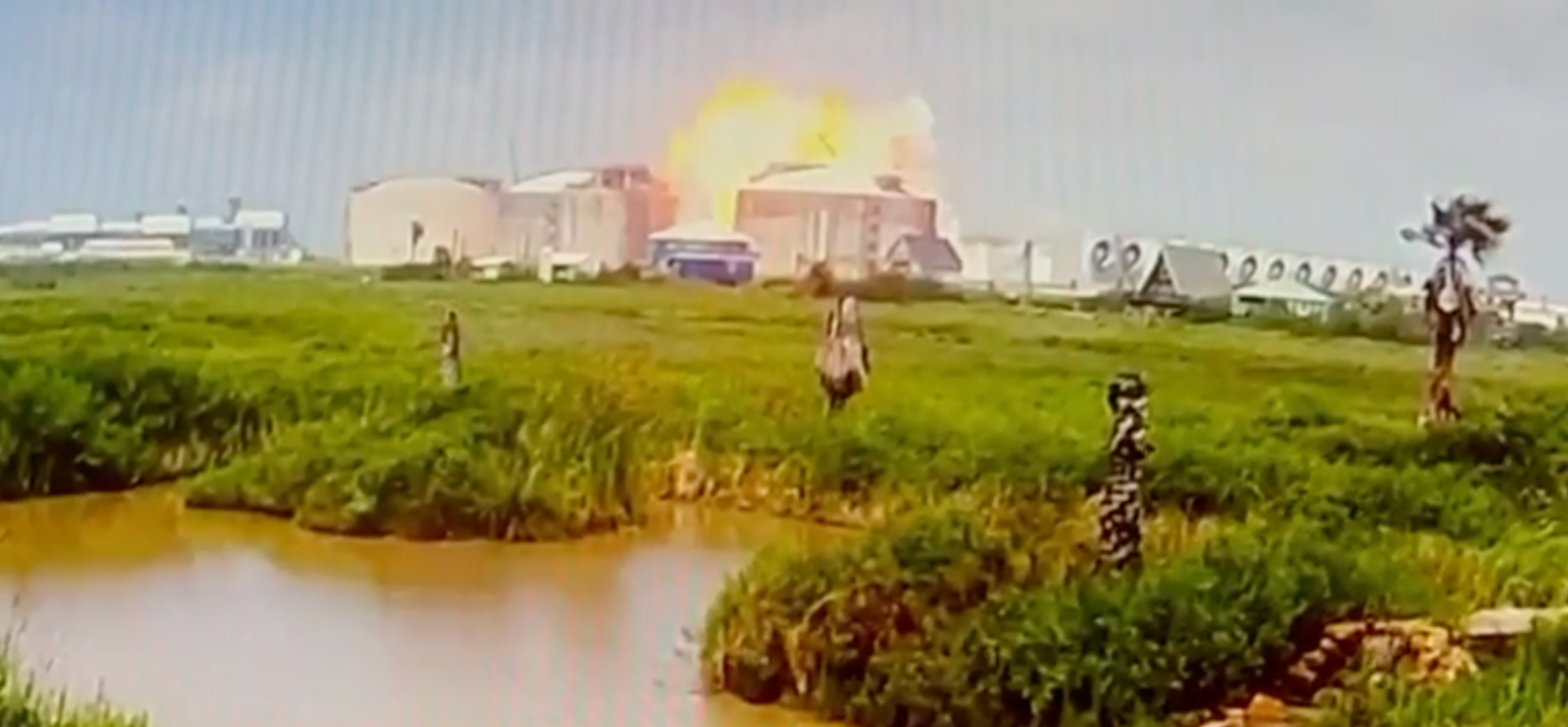Maersk's Methanol Efforts Proceed with Bunkering in Singapore and US Plant
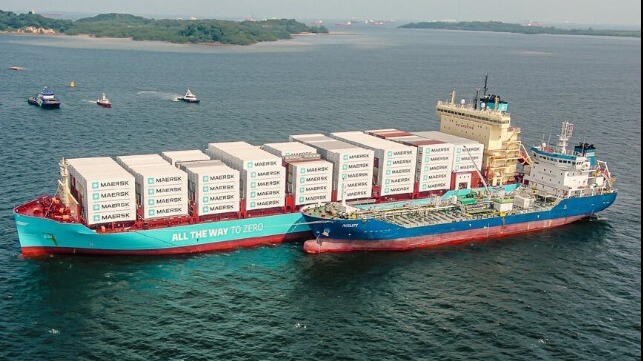
Maersk continues to forge ahead with efforts to develop methanol as an alternative fuel to support the maritime industry’s transition. The shipping company is supporting the development of a large green methanol production facility in Central Louisiana while in Singapore they completed the port’s first-ever ship-to-ship methanol bunkering operation. With its maiden voyage underway, the first containership fueled by methanol is now a little over a month away from reaching Maersk’s headquarters in Copenhagen.
Singapore’s Maritime and Port Authority (MPA) is highlighting the unique bunkering operation and the preparation it undertook. Before the operation, extensive safety preparations were made, including tabletop exercises, workshops, and a ground deployment exercise involving various stakeholders and government agencies. The MPA highlights that it conducted a thorough risk and environmental impact assessment, reviewed global methanol-related incidents, and incorporated the use of drones, weather and tide forecasting, plume modeling, and monitoring to support the operation.
The 32,300 dwt containership built in South Korea which will be officially named Laura Maersk when it reaches Copenhagen, arrived in Singapore on July 26 from Shanghai. Working with Hong Lam Marine which received the green methanol from Vopak Terminals, the vessel was refueled with approximately 300 metric tonnes of bio-methanol from the bunker vessel MT Agility. The containership will depart Singapore for the more than 5,300 nautical mile voyage to the Suez Canal.
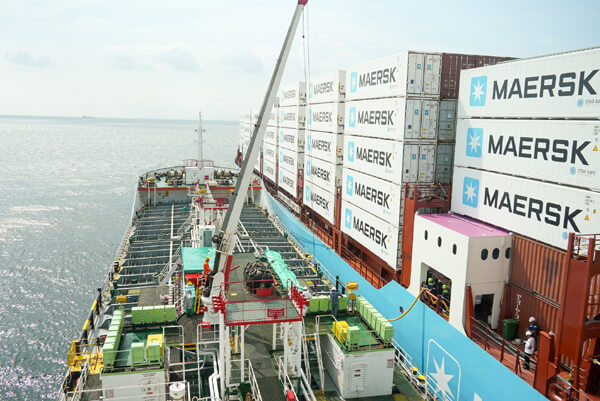
Singapore undertook extensive preparations to ensure the safety of the bunkering operation (MPA)
As the voyage continues, Maersk also continues to build out its global supply network for the future fuel that will be required for its fleet of ocean-going methanol dual-fuel ships now on order as well as the other major carriers that have followed with orders for ships.
SunGas Renewables, a Louisiana-based company spun out of GTI Energy to focus on renewable syngas products announced plans to proceed with the construction of a large green methanol production facility that is expected to supply methanol to Maersk’s fleet. The company plans to invest approximately $2 billion to construct the project at the former International Paper facility in Rapides Parish, Louisiana. Construction is expected to begin in late 2024 with commercial operations commencing in 2027.
“Using biomass from sustainably managed forestry along with carbon capture allows our project to generate green marine shipping fuel while simultaneously removing carbon from the atmosphere,” explains Robert Rigdon, CEO of SunGas Renewables.
The project which will be called Beaver Lake Renewable Energy is expected to produce nearly 400,000 metric tons of green methanol per year for marine fuel. It will utilize wood fiber from local, sustainably-managed forests in the production of the fuel with a carbon sequestration process of nearly a million tons per year of CO2.
In late 2022, SunGas Renewables announced a strategic green methanol partnership with Maersk to produce green methanol from multiple facilities around the United States. The BLRE project is SunGas Renewable’s first facility to produce green methanol for Maersk.
SEA-LNG Highlights Growth of Bio-LNG Bunkering
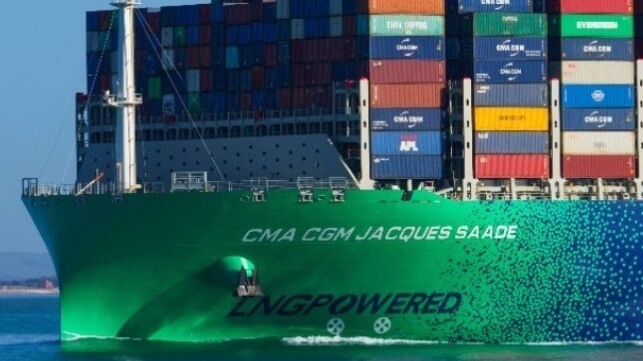
SEA-LNG, the industry coalition established to demonstrate the commercial advantages of LNG as a marine fuel, is reporting strong growth in the availability of bio-LNG including in major bunkering ports. Growth of the alternative fuel is increasingly important both to support the expansion of the LNG-fueled fleet and to meet emerging regulations designed to reduce methane emissions as well as support the development of renewable fuels that do not compete with the production of food.
The European Council’s moves this week to complete the adoption of FuelEU Maritime due to become effective in 2025 highlight the critical need for bio-alternative fuels that meet the EU’s Renewable Energy Directive and requirements that fuels do not compete with food production. SEA-LNG reports that the current fleet of 355 LNG-fueled vessels, excluding LNG carriers, are all capable of using bio-LNG as a drop-in fuel without modification. DNV on its Alternative Fuels Insight platform estimates that the LNG-fueled global fleet with grown by 2.5 times in the next five years to nearly 1,000 ships.
SEA-LNG in its market analysis reports that annual production of biomethane, from which bio-LNG is produced, is currently around 30 million tonnes or around 10 percent of shipping’s total annual energy demand. Further, they report that bio-LNG is currently available in almost 70 ports worldwide, including in Singapore, Rotterdam, and the US East Coast. They highlight that bio-LNG can also be transported, stored, and bunkered in ports using the existing LNG infrastructure, which provides a route to further expansion of its availability in coming years.
“The fact that bio-LNG is commercially available now and being used as a drop-in marine fuel by operators in Europe, North America, and Asia, demonstrates the sustained contribution that the LNG pathway can make to decarbonizing our industry, starting today,” said Adi Aggarwal, General Manager of SEA-LNG. “Climate change is a stock and flow problem, the longer our industry waits to start using low-carbon fuels, the tougher the decarbonization challenge will be.”
Bio-LNG used in the maritime industry is produced from sustainable biomass feedstocks such as human or agricultural waste, which means it does not compete with the production of food, fiber, or fodder, as defined by regulations such as the EU’s RED II and the Renewable Fuel Standards in America. SEA-LNG highlights that in general, the use of bio-LNG as a marine fuel can reduce GHG emissions by up to 80 percent compared to marine diesel on a full well-to-wake basis. They further contend that depending on the method of production, bio-LNG can have net-zero or even net-negative GHG emissions on a lifecycle basis.
Environmentalists have been critical of the growth of the LNG fleet pointing to methane slip, the condition where unburnt methane which is especially harmful to the environment is contained in a ship’s exhaust. Global regulations, including an initiative from the UN Climate Summit, specifically are targeting methane slip at all sources from production to the use of LNG as a fuel source. SEA-LNG argues that newer marine engines and technologies are reducing methane slip while additional research is also underway to eliminate methane emissions from ship’s exhausts.
SEA-LNG also addresses the challenge of scaling up bio-methane production to meet demand. The industry coalition cites research from the Nanyang Technological University’s Maritime Energy and Sustainable Development Centre of Excellence (MESD) released in October 2022, showing the global potential for the expansion of biomethane production of up to 20 times current production levels by 2050. Accounting for demand for other sectors, MESD forecasts that bio-LNG as a marine fuel could be available in sufficient quantity to decarbonize approximately 13 percent of the global shipping fleet in 2050.
HHI Gets Approval for Ammonia-Based Shipboard HVAC Plant
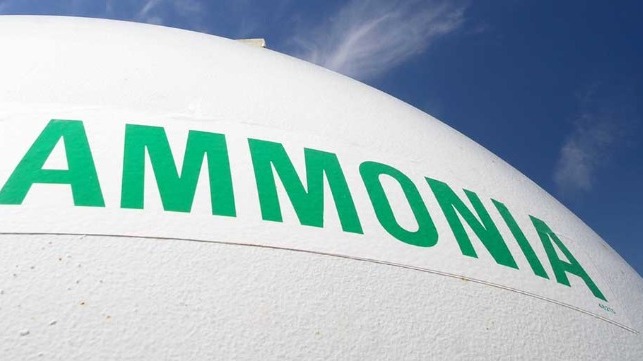
ABS has issued an approval in principle to HD Hyundai Heavy Industries (HHI) for its new ammonia-based ship HVAC refrigeration system.
Ammonia is the most common industrial refrigerant worldwide because of its excellent efficiency and affordable price. In addition, it has zero greenhouse-gas impact, unlike some modern refrigerants, and has no effect on the ozone layer. It is a common refrigerant aboard reefer ships and large fishing vessels, with decades of proven service.
Ammonia's drawbacks are also well-known, and much discussed in the maritime industry. It is toxic and flammable, and these safety challenges have to be managed in a shipboard environment. Its long history in fishing and in shoreside applications have established its risk/benefit profile, and two research studies recently concluded that it can be used safely as a marine fuel - with the right precautions. Extending its use to merchant shipboard HVAC is a small step towards far larger ammonia-fuel systems.
HHI developed its new ammonia refrigeration system in response to shipowners’ requests for a more eco-friendly refrigerant for HVAC, the company said in a statement. Ammonia's attractiveness for the owner is in its zero global warming potential, as well as its inherent safety for the ozone layer. Hwan-Sik Lee, head of the ship design office at HD Hyundai Heavy Industries, emphasized that HHI wants to help reduce the GHG footprint of the whole ship, not just the propulsion system.
“This is an exciting development from HHI for the maritime industry’s decarbonization quest to find sustainable solutions. ABS has always been a safety pioneer, so we are well placed to tackle the challenges on board and ashore presented by ammonia’s toxicity and flammability. ABS is committed to leading the industry in supporting ammonia’s safe adoption at sea,” said Panos Koutsourakis, ABS Vice President, Global Sustainability.
